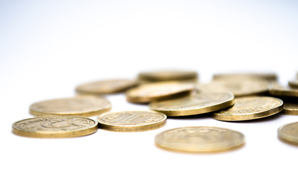The financial media have published endless stories about “tax-free savings accounts”, but even with this glut of information, most people are none the wiser about these new investment products.
This government initiative was launched on 1 March 2015 to encourage household savings. To this end, no tax on interest, capital gains or dividends will be charged on the growth of the investment. You can invest up to R30 000 per year and a total of R500 000 in your lifetime into these types of accounts.
While this sounds like a great deal (“quick, dash out, open a tax-free account immediately!”), in fact, it’s not as clear cut as that. We looked into some of the complexities, drawbacks and benefits around these types of accounts to help you to understand whether they are really worth it.
1.They are not only savings accountsThankfully, tax-free savings accounts are not limited to low-interest-earning savings products only. Most investment companies have launched new tax-free investment products and others are making their existing products tax free for the first R30 000 you invest each year. This means that you can invest for the long term and earn decent returns, tax free, in asset classes such as equities, bonds and listed property.
2.If you withdraw your money, you’ve lost that portion of your investment totalBecause tax-free savings accounts should be long-term investments, you shouldn’t think of withdrawing or cashing out any money from the account, because that money can never be re-invested.
This is because the R30 000 annual and R500 000 lifetime limits are limits on the amount of money you can put in, not the total capital accumulated, so if you withdraw the money, you can’t re-invest it and hope to reap the tax benefit again. To illustrate, if you’ve reached your R30 000 annual investment limit, and you draw R10 000, you can’t put that R10 000 back into the account and get your tax-free benefit.
In addition, any money deposited over and above the annual limit will be taxed at 40%. That’s the capital that will be taxed, not just the growth, so be sure to stay under your limit. You also can’t beat the system by investing your annual limit twice over in two different companies’ tax-free investment products. You will be caught out at your tax return and charged a 40% tax on the additional invested capital.
3.You can invest on behalf of your children for a greater total, but consider what it’s costing themSince you can invest in the names of your minor children, a family of four could invest up to R120 000 a year, which becomes a very appealing investment option indeed. According to Stuart Kantor, an independent financial advisor at Kanan Wealth, this makes tax-free savings accounts a great vehicle for an education fund, as most education funds are endowment policies, which are taxed at 30% during the term of the investment. It’s also a good way to provide your children with a tax-free lump-sum to get them started in life when they turn 18.
However, it is important to bear in mind that while you are benefiting from the tax-free structure in your children’s names, you are eating into their lifetime limit. When they are old enough to take charge of their own financial affairs, you will have limited their opportunity to invest in tax-free savings in the same way. So if you are going to invest in their names, be sure that you are considering the long-term impact it will have on them.
4.You probably weren’t paying that much tax anyway…Currently, the first R23 800 of interest that you earn on savings in a normal savings account is tax free. The first R30 000 of normal investment growth is also free from capital gains tax. This means that you will have to invest for a long time before you realise this kind of growth. For example, if we assume an investment return of 10%, it will take around six years of investing R30 000 a year before you are earning more than R23 800 in interest annually. It is only after you have passed these thresholds that you are getting the benefit from a tax-free savings account.
This is further complicated by the fact that most investment funds are made up of a portion of interest earning investments, which are taxed as income according to your tax bracket, and a portion of equities exposure, which is taxed at 33.3%, once thresholds have been reached. Investment growth also comes from dividends, which are normally taxed at 15%. Essentially, this means that it’s tricky to calculate your exact tax savings, but it’s important to know that as things stand, you’ll only begin to beat the taxman after six years or so with the maximum investment. This is why it’s vital to view tax-free savings accounts as a long-term investment.
However, there has been talk of scrapping the tax-free thresholds on normal savings and investments accounts, which will mean that tax-free savings accounts will be the only way to realise these benefits.
5.Tax-free savings accounts shouldn’t necessarily replace other types of investmentsWarren Ingram published an article on Moneyweb, in which he detailed the hierarchy of long-term investments. This is the order of investment priority he suggested:
- Pay off short-term debts
- Build an emergency fund equal to three months’ worth of your expenses
- Make full use of your retirement fund contribution allowance (15% of your taxable income)
- Put R30 000 a year into a tax-free savings account
- Invest in taxable discretionary savings and investments
As you can see, you should not sacrifice your maximum retirement savings or reduce your other financial commitments to invest in tax-free savings accounts. The only point at which tax-free savings accounts should take precedence is if you are already investing in shares, unit trusts or ETFs for the long term, in which case, of course you should use up your tax-free limit first.
Ingram also pointed out that if you have no additional cashflow to invest, but have existing investments in investment products that are not “tax free”, it may be worth considering cashing them out and re-investing them, but you should speak to a financial advisor about the implications, because the original investment might then be subject to capital gains tax.
So where to from here?It boils down to this: Tax-free savings accounts are a fantastic long-term investment product. Do not use them for your day-to-day savings, do not use them for your emergency fund, do not replace your retirement annuity and do not go into debt to invest in them. However, once you are comfortable that these other aspects of your financial planning are in order, they represent a very attractive way to achieve tax-free growth on the first R30 000 that you invest annually.
Happy investing




